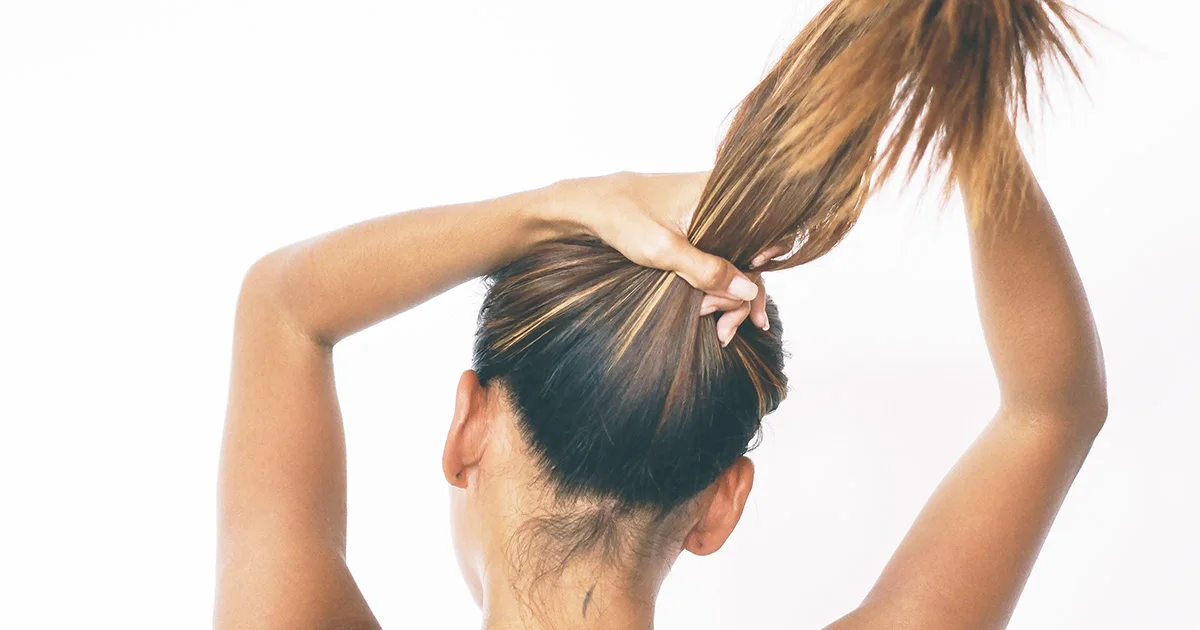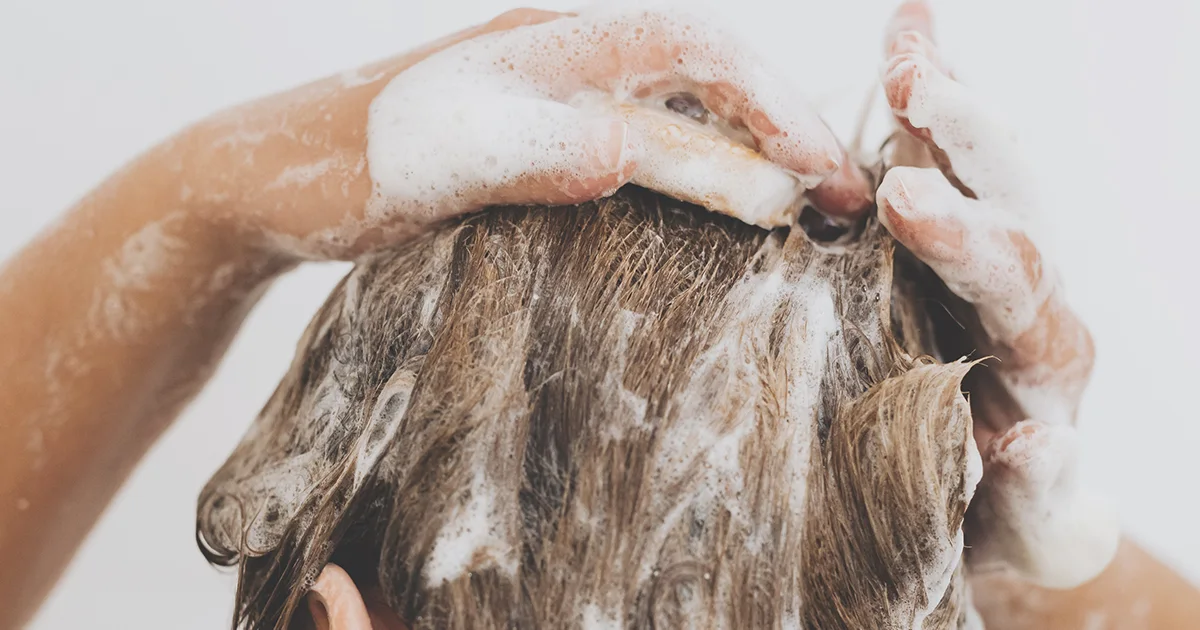Here's what we'll cover
Here's what we'll cover
There is no shortage of lotions, potions, vitamins, and supplements that manufacturers claim will make your hair thicker. But only three therapies are FDA approved to treat androgenic alopecia (male pattern baldness). Of them, finasteride is the gold standard.

What is finasteride, and does it work?
Finasteride (brand name Propecia) is a medication that blocks a potent form of testosterone called DHT (dihydrotestosterone). DHT can attack hair follicles, causing them to shrink and produce smaller, thinner hairs. By blocking DHT, finasteride can slow, stop, or even reverse hair loss.
In clinical trials, finasteride stopped hair loss in 83% of people with male pattern baldness who took it for two years (Shapiro, 2003). But you can see results from finasteride within as little as three to four months.
Finasteride Important Safety Information: Read more about serious warnings and safety info.
Finasteride results timeline
Don’t despair if you don’t see overnight results. While finasteride is an effective treatment for male pattern hair loss, it’s important to know that you may initially experience more hair loss after you start taking it. That’s normal, though, and the new hairs typically start to grow in within a few months. Overall, you can expect to see new hair growth around the third or fourth month of treatment, with more noticeable results by month 6, and the full effect within a year (Varothai, 2014).
To get an even bigger bang for your buck, there are some things you can do while taking finasteride to increase its effectiveness (more on that below).
How to speed up finasteride results
It can be exhausting to wait for your hair to grow in. But don’t despair. Here are five things you can try to speed up the results of finasteride use.
1. Combine finasteride with minoxidil
Minoxidil (Rogaine) is a medication that you rub onto your scalp that comes as a foam or liquid. One such example is Ro’s Hair Solution Rx, a prescription topical treatment that can help slow hair loss and promote regrowth. In general, scientists believe minoxidil helps stimulate hair growth by increasing the flow of blood and nutrients to hair follicles.
A clinical trial of 100 people with androgenic alopecia found that using finasteride and minoxidil together was more effective than using either one alone (Khandpur, 2002). If you’re interested in trying this combination, speak with your healthcare provider.
2. Use an LLLT device
In addition to using finasteride and minoxidil, you can incorporate low-level laser therapy (LLLT). LLLT is an FDA-approved method of treating hair loss. The devices are available either as a wand or a cap that you wear on your head. They emit a constant red LED light, which is believed to reduce inflammation and increase blood flow to hair follicles.
A randomized controlled trial found that LLLT caused significant changes in hair growth with minimal side effects (Jiminez, 2014). An analysis of 11 clinical trials also determined that LLLT was superior to placebo for regrowing hair (Adil, 2017).
3. Try a scalp massage
Could massaging your scalp actually improve baldness? Research suggests it might.
A study of 327 men with male pattern baldness found that nearly 69% of people who tried scalp massage either saw their hair loss stabilize or experienced hair growth. On average, it took over 36 hours of total massage time to see results (English, 2019).
4. Use DHT-blocking shampoos
Several varieties of shampoo claim to block DHT's effects on hair follicles.
Some of these shampoos contain ketoconazole (an antifungal medication found in some dandruff shampoos). Some studies show that ketoconazole in combination with finasteride slows hair loss more than treatment with finasteride alone (Khandpur, 2002).
5. Take vitamin D
Vitamins that claim to regrow hair often contain supplements like biotin, zinc, and vitamin B. There's actually very little scientific evidence that most vitamins and supplements can help with hair loss—except for vitamin D.
Vitamin D, known as "the sunshine vitamin," is naturally produced by the body when the skin is exposed to the sun. You also get it through foods like milk and eggs.
In one analysis, researchers noted that supplementing your diet with low levels of vitamin D can improve symptoms of androgenetic alopecia and telogen effluvium (TE), which is temporary hair loss caused by stress or trauma (Almohanna, 2019). Increasing your level of vitamin D isn't a magic bullet to fix hair loss, but there are other benefits to making sure you're getting enough: vitamin D is believed to be protective against inflammation.
Oral Minoxidil Important Safety Information: Read more about serious warnings and safety info.
Speak to your healthcare provider
The bottom line is that finasteride is a useful tool to slow down hair loss, but if you want to boost its effectiveness, there may be other things, like the above, that you can try. Ask your healthcare provider to help decide if any of these options will work for you.
DISCLAIMER
If you have any medical questions or concerns, please talk to your healthcare provider. The articles on Health Guide are underpinned by peer-reviewed research and information drawn from medical societies and governmental agencies. However, they are not a substitute for professional medical advice, diagnosis, or treatment.
Adil, A., & Godwin, M. (2017). The effectiveness of treatments for androgenetic alopecia: A systematic review and meta-analysis. Journal of the American Academy of Dermatology, 77 (1), 136–141. doi: 10.1016/j.jaad.2017.02.054. Retrieved from https://www.ncbi.nlm.nih.gov/pubmed/28396101
Almohanna, H. M., Ahmed, A. A., Tsatalis, J. P., & Tosti, A. (2019). The Role of Vitamins and Minerals in Hair Loss: A Review. Dermatology and Therapy, 9 (1), 51–70. doi: 10.1007/s13555-018-0278-6. Retrieved from https://www.ncbi.nlm.nih.gov/pmc/articles/PMC6380979/
English, R. S., & Barazesh, J. M. (2019). Self-Assessments of Standardized Scalp Massages for Androgenic Alopecia: Survey Results. Dermatology and Therapy, 9 (1), 167–178. doi: 10.1007/s13555-019-0281-6. Retrieved from https://www.ncbi.nlm.nih.gov/pubmed/30671883
Hugo Perez, B. S. (2004). Ketocazole as an adjunct to finasteride in the treatment of androgenetic alopecia in men. Medical Hypotheses, 62 (1), 112–115. doi: 10.1016/s0306-9877(03)00264-0. Retrieved from https://www.ncbi.nlm.nih.gov/pubmed/14729013
Jimenez, J. J., Wikramanayake, T. C., Bergfeld, W., Hordinsky, M., Hickman, J. G., Hamblin, et al. (2014). Efficacy and safety of a low-level laser device in the treatment of male and female pattern hair loss: a multicenter, randomized, sham device-controlled, double-blind study. American Journal of Clinical Dermatology , 15 (2), 115–127. doi: 10.1007/s40257-013-0060-6. Retrieved from https://pubmed.ncbi.nlm.nih.gov/24474647/
Khandpur, S., Suman, M., & Reddy, B. S. (2002). Comparative efficacy of various treatment regimens for androgenetic alopecia in men. The Journal of Dermatology , 29 (8), 489–498. doi: 10.1111/j.1346-8138.2002.tb00314.x. Retrieved from https://pubmed.ncbi.nlm.nih.gov/12227482/
Olsen, E. A., Dunlap, F. E., Funicella, T., Koperski, J. A., Swinehart, J. M., Tschen, E. H., et al. (2002). A randomized clinical trial of 5% topical minoxidil versus 2% topical minoxidil and placebo in the treatment of androgenetic alopecia in men. Journal of the American Academy of Dermatology , 47 (3), 377–385. doi: 10.1067/mjd.2002.124088. Retrieved from https://pubmed.ncbi.nlm.nih.gov/12196747/
Shapiro, J., & Kaufman, K. D. (2003). Use of finasteride in the treatment of men with androgenetic alopecia (male pattern hair loss). The Journal of Investigative Dermatology. Symposium Proceedings , 8 (1), 20–23. doi: 10.1046/j.1523-1747.2003.12167.x. Retrieved from https://www.sciencedirect.com/science/article/pii/S0022202X15529357
Varothai, S., & Bergfeld, W. F. (2014). Androgenetic alopecia: an evidence-based treatment update. American Journal of Clinical Dermatology , 15 (3), 217–230. doi: 10.1007/s40257-014-0077-5. Retrieved from https://pubmed.ncbi.nlm.nih.gov/24848508/









